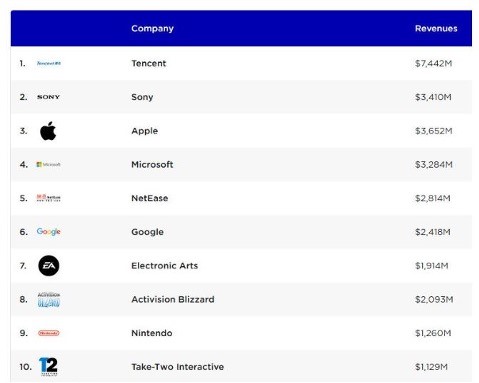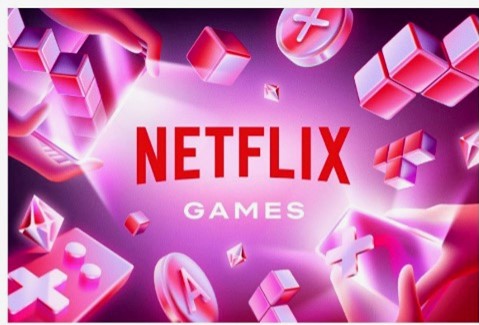“By this, I take it you think everybody is who they say they are.” –Evelyn Salt, “Salt,” Sony, 2010
Say the word “entertainment” and immediately you think of blockbuster movies in theaters or studios/streamers stuffing a continuing stream of great content into their libraries to ensure you don’t drop them for someone else. So, why would the people in the hallowed halls of US government get upset because Microsoft wanted to acquire a lowly video game company (Activision Blizzard) for the mind-boggling sum of $68.7 billion? Of course, that didn’t faze Disney, which laid down their $1.5 billion bet with Epic Games that will enable them to share IP and more.
Jeez, let’s see:
- The global box office hit $32 billion last year.
- The streaming video market is set to hit $108.5 billion this year.
- The video game market is set to hit $282.3 billion this year.
- Ten of the blockbusters of 2023 were based on video game IP (and one on a doll).
You mean the stuff you played as a kid is actually more popular?
Well, we have a couple of friends who can’t get enough movies/shows as long as they aren’t bladder-bustin’ three hours long. However, taking on a six-hour gaming session is a good warm-up. No, we don’t ask them if they take periodic breaks because some things are just personal.
The point is, the video gaming is big business. Microsoft’s game division and Activision each rack up huge dollars from folks who pit themselves against enemies of every shape/size and situation that push them to the limits. Given a few hours or a days’ rest, and they’re ready to enter the realm again.
Put the gaming giants together, and they make more than all of the US movie houses combined.

No, they’re not as big as China’s Tencent, but after lobbing off 2,000 jobs, they’re making even more money.
And to prove that game IP is good for things other than playing with, Disney dropped a cool $1.5 billion on Epic Games to ensure they could get an inside track on really cool movies and maybe, just maybe, beef up their gaming activities.
Yeah… they know!
Folks don’t just play a game once and move on to the next “big hit,” they come back for more… and more… and more.
The industry is dramatically different from the days when we worked with Tamriel’s Atari. Back then, you sold a game system, then sold box after box of pretty good games.
Today, 70% of the game sales are digital, which is probably why big box stores like Best Buy emptied their shelves. And while they were at it, they dumped the movie DVDs because, well, we stream our entertainment—all of it. Streaming is just too convenient!
But gaming is different from films/shows. First of all, streaming video is a fairly passive activity. The most activity, excitement, anxiety you experience is popping fresh popcorn and searching from one service to another until you finally settle on something/anything to watch. With games, it’s the whole range of activity/experience, depending on whether you’re playing single-person contests, MMOGs, or puzzles.
Entertainment has to be good. Our gamer friends critique their games on the plot, characters, content flow, weapon/tool selection, challenges/options, and outcomes of some actions/decisions over others.
Or, as one dedicated gamer explained to us after wrapping up a gaming session:
- “Very moving story and emotional, depending on your decisions. And it’s cool to actually interact with ST tech on a Federation starship.”
- “Voice acting is stellar.”
- “Graphics are fair and good enough.”
- “Being your own director (making choices that impact the relationship with your fellows) is great, although it doesn’t really affect the storytelling.”
- “Playing as two protagonists (2nd female officer and male engineer) really adds to the overall immersion.”
- “Overall, 7.5/10 and well worth playing IMO.”
Our gamers, our son, and members of the healthcare community even say video games are good for you. They’re great for stress relief/escapism, productively fill spare time, are good for manual dexterity, brain exercise, problem solving, improves vision (especially peripheral vision), and gives you a sense of accomplishment or at least adds to your perseverance level. And, if you’re playing a multi-player game, it’s a great way to socialize, as it gives a sense of community and mutual accomplishment.
That’s better than becoming one with your couch for three-plus hours or going from social media video to social media video watching people do dumb tricks or pimping some product/service, or worse, getting dragged into some deep, dark, sinister rabbit hole.
There’s certainly something convenient about being able to go to a gaming site, pick up the latest version of a game, pay for it/download it, and play it forever. Okay, technically you don’t own the game you purchased—read the user’s agreement in small, small type—because when they tell you they’re going to quit supporting your version or de-list a game, you have no recourse.
Of course, there are winds of change—even in the video game industry.
Microsoft shut down their Xbox 360 ecosystem in July when they said, “We’re gone, but hey, you can still play your favorite games.” That is, until your game system gives up the ghost or your characters can no longer lift a sword. They want to move on to the streaming game model that is gaining traction.
To get a handle on what’s really going on in the industry, tons of “real gamers” flocked to the annual Game Developers Conference earlier this month.
All we can say is it’s… confusing.
Dedicated gamers buy the best system they can afford or build their hardware from the ground up with the mother of all motherboards, a screaming CPU, tons of RAM/SSD, the biggest, baddest Nvidia GPU cards they can afford, fans or liquid-cooling system, monster power supply, and if they really want to trick it out, lights. We’re talking about serious gamers!
Of course, that leads them to the biggest issue: download/own vs. streaming.
Come on, you knew it was bound to happen when Netflix surprised/scared Wall Street by announcing their video game division.

The profitable movie/show folks realized that entertainment is entertainment, and there are more people playing video games around the globe—3.07 billion, according to Newzoo, compared to 1.8 billion video streaming subscribers, according to DirectAvenue.
Of course, Apple knew that long ago.
While studios turn up their nose at their modest (but classy) video streaming library, they have to admit that Apple produces/buys the best video content available to keep their subscribers delighted. And while they don’t break out their subscription numbers, their recent Apple Services revenue report showed they hit $22.3 billion with more than 1.5 billion device/service users worldwide.
Our daughter, and millions of other folks, love the services—TV+, music, arcade, fitness+, news+, podcasts, books—the ones people consistently want and use.
Our gaming pair also look down on Apple’s gaming library, saying they are “beneath” a real gamer, but they do admit that mobile games are the biggest—and fastest growing—segment of the video game industry. According to Newzoo, the video game industry continues to grow and expand, with more than 3 billion men/women, kids/adults playing the complete range of games and devices worldwide.
Maybe it’s just a coincidence that Apple just happens to have a big share of the mobile device and video game markets.

It’s true, most mobile games aren’t filled with the ferocious action and intrigue that most serious video gamers want, but they do fill time and exercise the mind and eye/hand coordination. While mobile device (smartphone) games are the fastest growing segment in the video game market, users continue to use all of the devices available to take on the challenge at home and away. And the game play/revenues continue to grow.
In addition, mobile video gameplay is more profitable than movie theater ticket sales!
In other words, Apple has been hitting on all cylinders in the entertainment arena.
But…
When Apple’s Tim Cook announced the Apple Vision Pro, he had James Cameron, producer of Titanic, Avatar, and more), Disney’s Bob Iger, and other Hollywood notables in mind, describing how they were “blown away” when watching a film while wearing the Pro headset.

Actually, Cameron reportedly said his experience was “religious,” but we think that’s going a little overboard for a mixed reality headset that costs about $3,500, weighs more than our scuba diving mask, and strongly encourages not getting it wet.
Okay, it may be good, even great, for watching a movie and being totally immersed in sound/sight. Who knows, the Pro may even give an added dimension to sports… maybe. But Tim, if folks are willing to spend $2,000–$5,000 to build their hardware to play video games for hours on end, think what they’d do to strap on an AR/VR headset and dive so deeply into one of their adventures that they don’t return until next week?
Of course, Tim may suffer from the misconception that lots of folks do: that video games are for kids and are primarily a guy thing.Wrong on both counts.
Gen X and older gamers who cut their teeth on early gear/games didn’t suddenly wake up and say, “This stuff is a waste of a smart man’s time.” The quality and realism of the games grew up with them.
While ads may show kids playing video games, it turns out that the average player is more mature; and in fact, the Gen X and Boomer crowds not only account for a big share of players but also have more money to spend on their entertainment.
The average age of a video game player is 35. In fact, according to Business of Apps, 43% of the gamers are Gen X and older, who also dominated the early games on Atari and Commodore systems.
The older, more dedicated gamers like the side benefits of challenging their games—memory, eyesight, coordination, stress relief, challenging themselves/others, and even occasionally beating the game at the game. If that isn’t enough to bruise a young guy’s ego, he’ll really be disappointed to learn that nearly 50% (okay, 48%) of the game players are not only female, but really good gamers.
Yep, that great-looking gal in science class grew up to be a heavy-handed, serious gamer who knows every trick in the game developers’ book because she’s been there, done that, and ready to do it again!
To keep them hooked on their games, the GDC speakers and exhibitors (actually, every business) are making the same shift that the movie/show folks are doing: throwing AI into the mix.
But in the case of video games, gen AI could add a whole new dimension and level of excitement to the play. Generative AI will find a growing number of applications in tomorrow’s video games as it makes gameplay more interesting, more challenging, more fun, more globally available. AI tools can help writers create new varieties of original dialog for NPCs, so the conversations are more realistic, natural, and logical within the game’s storyline. Gen AI can potentially enhance the game’s storyline by creating new alternative narratives that respond to the player’s decisions while adapting to the player’s level of expertise and style, so every game is unique for every player.
The tools can “learn” how to develop mazes, dungeons, challenges, and obstacles in predictably unpredictable ways to keep the game interesting, challenging, different. Gamers who feel the only good game is one they download and have on their system might find a new level of satisfaction in streaming a contest that constantly changes.
But the biggest challenge/opportunity will be in quickly and easily localizing the game for players in every country around the globe so folks can share a common experience regardless of where they live.
Then, gamers will be able to agree with Evelyn Salt when she said, “You’re good. You can tell the rest of your story to one of my colleagues.”
And those colleagues can be across town, across country, or halfway around the world.